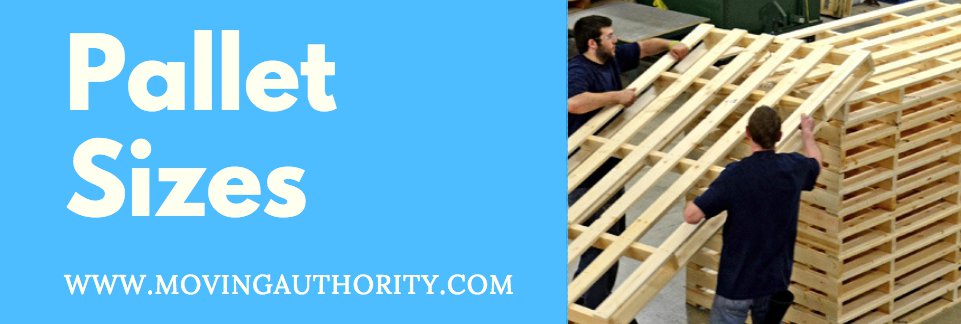Pallets Come in Different Sizes, What's Standard?
What's the Standard for Pallets?

- Pallets Have Become a Staple In the Moving Industry
- Beneficial for Both Carriers & Consumers Alike
- What are Common Standard Pallet Sizes?
- Two Common Pallet Types
1. Pallets Have Become a Staple In the Moving Industry
Before the era of pallets, people were using wooden crates, boxes, barrels, and kegs to transport, store, and move goods. In the early 1920's the modern forklift was invented. This was a huge development for how goods were stored and an advancement in the way they were protected. Soon after warehouses from all over the world were relying on pallets. During World War II, the universal 48" x 48" was used to enable their vast production and freight shipments. Later it became the one of the standard pallet sizes and the most commonly used pallet on a global scale.2. Beneficial for Both Carriers & Consumers Alike
A pallet is a piece of equipment used to fortify your goods while they are being moved in a rougher fashion, such as with a forklift. They are essentially built to accommodate the transportation of goods by forklift, making it safer for both consumer and carrier. Since pallet shipping is effective in regards to skill and spatial maximization, carriers use them often. In some circumstances, they can be specially made, though various pallet sizes exist for you to choose from that are conventional in the industry.
3. What Are Common Standard Pallet Sizes?
The most difficult thing about pallets is that they come in some many varieties. It is especially important when you may be shipping globally. Pallet sizes differ all throughout the world, such as in Europe or Australia. It was time to make some advancements within the industry on an international level, as global trade needed standards of some sort. The International Organization for Standardization (ISO) has now determined 6 sized pallets that are universal. Since then, the ISO pallet sizes are known internationally and widely used.

These average criterion dimensions were also standardized by the Grocery Manufacturers Association (GMA). They have great power and political influence in this industry. The size they determined that a typical size pallet dimension should be 48" x 42". These sized pallets are often called GMA pallets due to their nature. With GMA developments, the U.S. generated more than 30% GMA pallets alone. But, falling behind this standard size are two others. One dimension is 42" x 42" with the other being 48" x 48".
4. Two Common Pallet Types
As discussed, there are various types of pallets yet 2 main pallets evolved from their origin in construction. The Stringer pallet, which is generally constructed involving a 2" x 4" piece of wood, along with some type of stringer is often used. Another type of pallet is the Block pallet. They differ from the Stringer pallet in that they have great reinforcement because they are so sturdy. A Block pallet is made with the stringers running both parallel as well as perpendicularly.
There are a few ways that a few pallet entries that are most commonly used as entry points for pallet shipping. Listed below are three of the most common types seen in the industry:
- Two-way pallets only have 2 openings on the ends
-
With openings on two ends, a partial four-way entry pallet will also have side openings on the ends
-
Typical four-way entry pallet has forklift openings on all sides, maximizing the forklifts accessibility
Add Comment